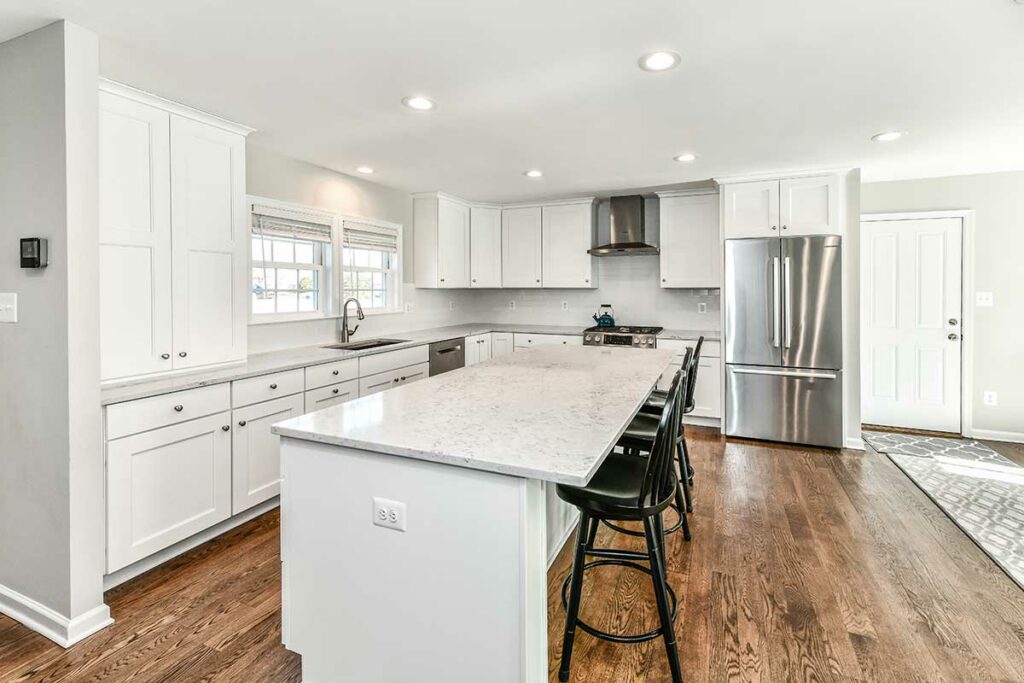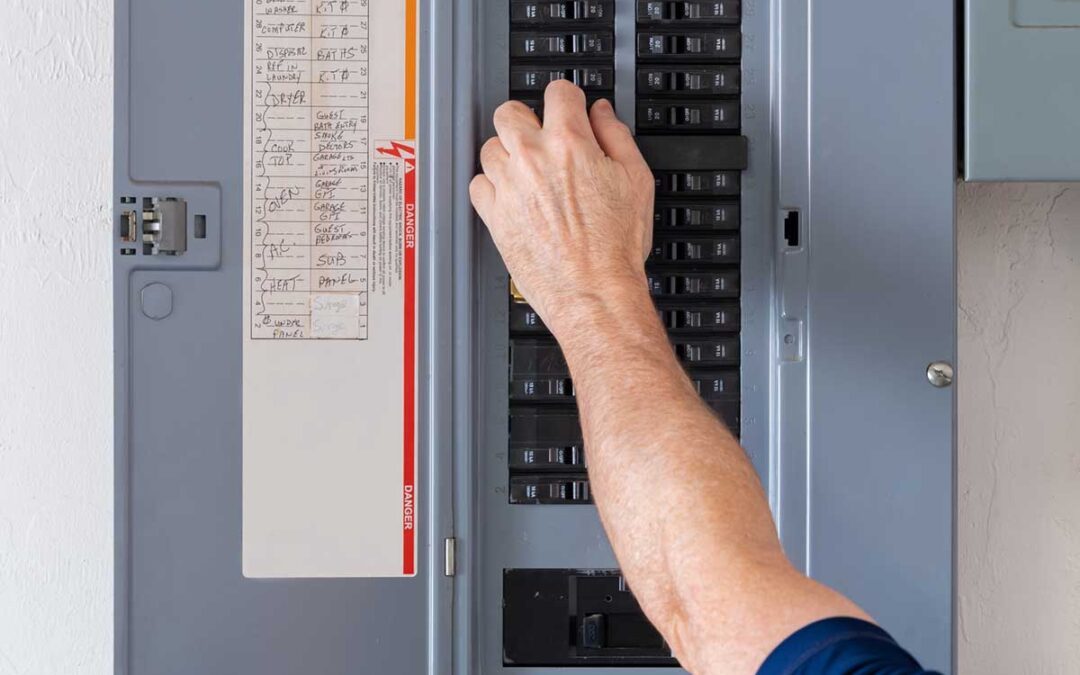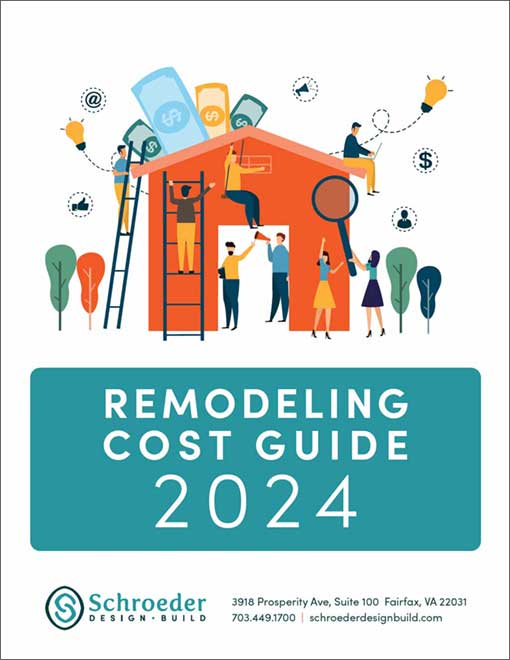When planning a home remodel in Northern Virginia, most homeowners focus on design, layout and finishes. But what’s behind the walls matters just as much. Electrical code changes for remodels are reshaping how projects are planned, priced and executed, and directly affect the safety, energy efficiency and overall cost of your renovation. At the same time, they introduce new materials, installation steps and inspections that can influence timelines and budgets. This post takes a closer look at the important electrical code changes that could impact your Virginia remodel, why it matters for your remodel, and how to stay compliant and informed.
“These changes are something every homeowner should be aware of, especially if you are planning a significant remodel,” explains Andrew Schroeder, MCR, Owner and CEO of Schroeder Design Build in Fairfax, VA. “They represent a shift toward building smarter, safer homes that are better equipped to handle the way we live today.”
Why These Virginia Electrical Code Changes Matter

Recent updates to Virginia’s electrical code, adopted on January 18, 2024 and fully effective on January 18, 2025*, aim to enhance safety, energy efficiency and resilience in residential construction and remodeling. However, they also introduce new material and labor requirements that can impact your remodeling costs.
Highlights from the updated code include:
Enhanced Lighting Controls (Section N1104.2): Stricter lighting control requirements, including advanced controls for improved energy efficiency standards, are implemented to reduce energy consumption and promote sustainability. All permanently-installed lighting (excluding bathrooms, hallways and safety lighting) now requires a dimmer, motion (occupancy) sensor or built-in control.
What it means for your remodel: We now price all jobs with dimmers for non-essential lighting and motion-sensor ceiling fixtures for garages.
Exterior Lighting Requirements (Section N1104.3): Exterior lighting changes include specific standards for moisture protection and energy efficiency. Exterior lighting more than 30 watts shall be controlled by a manual on/off switch that permits automatic shut off during daylight hours. Controls cannot have permanent manual override switches.
What it means for your remodel: These requirements may require additional planning, materials and coordination during your remodel, especially when updating older homes.
Smoke Alarm Placement (Section R314.3): Devices are required to be suitable for individuals who are deaf or hard of hearing in certain residential settings. This includes visual alarms in rental units upon request. If a room adjacent to a hallway serving a bedroom has a ceiling 24” higher than the hallway, an extra smoke alarm is now required.
What it means for your remodel: Compliance may involve additional installation considerations.
Tip: If your home has raised ceilings, notify your project manager early to avoid mid-project change orders.
GFCI and AFCI Protection (Sections E3902.5 and E3902): Ground-fault circuit interrupter (GFCI) protection is now required for 250-volt dryers and ranges within six feet of a sink, and for electric vehicle (EV) chargers. Additionally, arc-fault circuit interrupter (AFCI) protection requirements have expanded to include more circuits to reduce the risk of electrical shocks and fires. These breakers are now required on all receptacles in both finished and unfinished basements, and on those in indoor areas considered damp or wet locations.
What it means for your remodel: Panel upgrades and additional wiring work may be needed.
Emergency Disconnects (Section E3601.8): Each dwelling unit is required to have a readily-accessible outdoor emergency disconnect. This improves safety by allowing first responders or others to quickly cut power in an emergency.
What it means for your remodel: Your project may require additional equipment and labor—such as larger enclosures or exterior meter installations—particularly in older homes where the electrical panel is located indoors. This is especially true if you’re increasing the panel’s amperage or relocating it.
Mandatory Surge Protection (Section E3606.5): All new or replaced electrical service panels now require installation of a surge protective device (SPD). This measure protects sensitive electronics and safety systems such as your fire alarms and GFCIs from voltage surges caused by lightning or utility issues.
What it means for your remodel: It may increase the cost of your electrical panel and installation labor. However, there are exceptions to the code when simply replacing an existing panel with a newer model in the same location.
Kitchen Receptable Placement (NEC 210.52(C)(2)): Kitchen islands and peninsulas are required to have a minimum number of outlets based on square footage, not just linear spacing.
What it means for your remodel: Your project manager will need accurate island dimensions early in the design process to prevent costly add-ons later.
Virginia Electrical Code Compliance with Schroeder Design Build

At Schroeder Design Build, staying compliant with Virginia’s electrical code changes is a core element of delivering safe, efficient and forward-thinking remodeling projects. By embedding code compliance into every step of estimating and planning, we minimize surprises and maximize peace of mind.
To manage the complexities and related costs associated with these changes, we use a clear three-step estimating system during the design process:
- Ballpark Estimate: An initial look based on early design ideas to give homeowners a clear idea of costs, including the impact of code-compliant upgrades.
- Priorities Alignment Estimate: Using your clearly-defined features, scope and budget list, we update your estimate to align with code requirements and your goals.
- Trade Walk & Competitive Bidding: This phase brings electricians and other licensed trade partners on-site to gather firm pricing and verify that all code updates are accounted for in the plan.
You’ll also benefit from:
- Transparent Allowance Tracking: You can see exactly how code-driven electrical changes affect the bottom line.
- Guidance on ROI-Driven Upgrades: We help you prioritize features like smart lighting controls or whole-home surge protection that not only meets code but adds long-term value and resilience.
- A Final Executive Summary and a Firm, Fixed-Price Contract: Before construction even begins, every project includes an executive summary and a firm, fixed-price contract so you know exactly what you’re applying for, including any additional materials or labor required to meet the latest home remodeling electrical code compliance.
“There’s no getting around the fact that these new electrical code requirements can add cost—sometimes significantly. That’s why transparency is so important. We break everything down clearly so our clients can see exactly where their investment is going, and understand what’s required versus what’s optional,” Schroeder says.
Work with a Team That Stays Current So You Don’t Have To

Accessible aging in place remodel worker client image
“Code changes can be overwhelming for the average homeowner, and frankly, they shouldn’t have to keep up with all of them—that’s our job. We stay on top of every update so we can guide our clients through a remodel with confidence, knowing that every part of their project will meet the most current safety and performance standards,” Schroeder explains.
Remodeling your home is a major investment, and staying ahead of evolving building and electrical codes is key to protecting that investment. Virginia’s updated electrical code reflects a broader shift toward safe, more efficient and future-ready homes. We make sure your home’s systems are up to date and built to last.
As electrical codes evolve, having a knowledgeable partner on your side makes all the difference. Working with Schroeder Design Build for your Northern Virginia remodel provides you with a team that brings experience, transparency and craftsmanship to every project. As a full-service design-build firm, we simplify the remodeling process by managing everything in house—from initial concepts and budgeting to permits and construction.
Our structured 3-step estimating system provides clarity from the start, and throughout your project, you get full visibility into costs. Beyond our processes, we stand out for our commitment to building code compliance, smart design choices and long-term value. We’ll help you understand which upgrades deliver strong ROI and ensure your remodel is safe, functional and future-ready.
“Our project aren’t just remodels—they’re long-term investments in quality of life,” Schroeder adds. “With decades of experience and a strong local reputation, Schroeder Design Build offers more than just a renovation. We deliver peace of mind and a finished space that truly feels like home.”
Have Questions? Contact Us.
Do you have questions about how Virginia’s electrical code changes can impact your remodel? Contact us today to schedule your free consultation.
Keep up with the latest remodeling trends by signing up for our newsletter.
And take a journey through our project portfolios for inspiration for your remodeling project.
*The new Virginia electrical code changes became effective on January 18, 2024, with the adoption of the 2021 Uniform Statewide Building Code (USBC). Beginning January 18, 2025, all new building permit applications and construction must adhere to the 2021 USBC requirements. –Source: Prince William & Fairfax County, VA Governments


